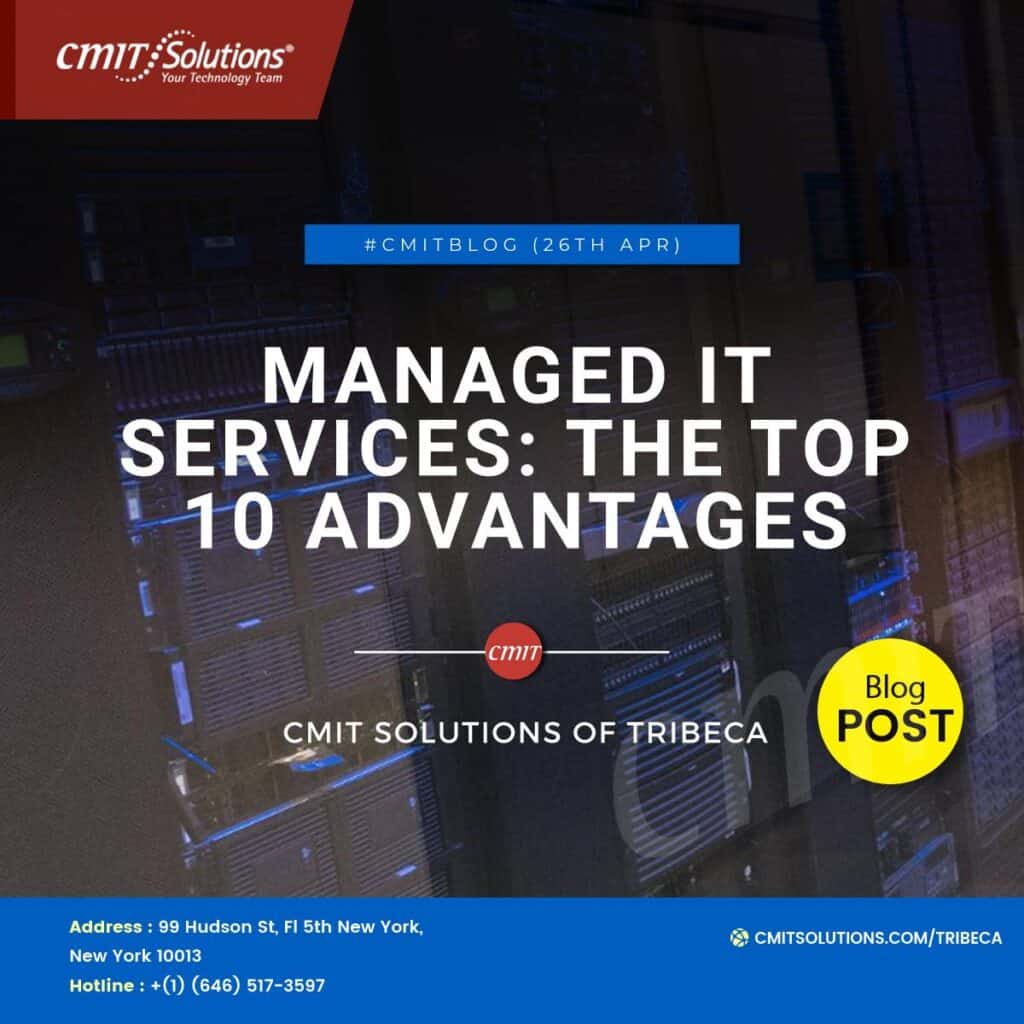Because of the recent digital upheavals that most organizations have undergone, they now rely entirely on their technology. It applies to businesses of all sizes, even SMBs. However, MSPs frequently require more internal skills to support and maintain technological infrastructures. They are thus compelled to look for IT help outside of their company. A survey conducted in 2021 opened a new window and revealed that the number of businesses managing more than half of their IT requirements through third parties climbed by 50% over the previous year. That amounts to almost 4 out of 10 firms.
The advantages of teaming up with a managed service provider
SMBs can acquire IT staff and stacks through partnerships with managed service providers (MSPs), which would otherwise be out of reach owing to their constrained financial capacity. Additionally, it enables them to focus on their key talents, which directly influence their business.
MSPs have a common interest in ensuring that a client’s network and IT estate are as stable and error-free as possible, in contrast to a break-fix IT provider. MSPs frequently act as strategic partners for their clients, providing them with knowledge on cutting-edge technology they may use to accomplish their goals effectively.
MSPs also serve a crucial security role in the modern world, as smaller firms are the target of a growing number of cyberattacks. Due to these factors, a 12.6% CAGR is predicted for the worldwide managed services industry, increasing from $243.33 billion in 2021 to $557.10 billion in 2028.
Datto just released its 2023 Global State of the MSP Report Opens a new window for anyone interested in learning more about the MSP sector. The study is based on a survey that Datto conducted worldwide of more than 1,800 MSPs. The purpose of the report was to learn more about their accomplishments, challenges, and possibilities for advancement in the future year.
95% of MSP respondents are optimistic about their sector and believe now is a great moment to be in the MSP company. Another encouraging statistic is that 82% believe revenue will rise over the following three years. Here are a few of the other conclusions from the Datto study.
How does a typical MSP appear?
The average MSP has a few traits that indicate the business is still relatively new.
- Over half claimed to have been in operation for six to eleven years.
- Almost 25% of companies are younger than five years old.
In the research, more than one-third of MSPs reported yearly revenues between $1 million and $5 million, while a second-third reported under $1 million earnings. Regarding the most exclusive venues, 8% brought in more than $10 million in sales per year, while 5% made more than $20 million. In the last 12 months, three out of five MSPs reported an increase in income, while 10% reported a decline. Most MSPs anticipate their businesses to increase by more than 5% in the upcoming year.
What does the average consumer look like?
Between 20 to 200 people make up the usual business that MSPs support, with 50 to 100 employees being the most frequent range (20%). Few have experience working with companies with more than 300 workers, and almost none have clients with fewer than ten employees. The top two industries handled by MSPs are high-tech and healthcare, with the median MSP customer spending $13,000 on managed services last year.
Does break-fix have a resurgence?
Since the beginning of the MSP sector, MSPs have positioned themselves as alternatives to break-fix businesses. Customers call a break-fix company when there is an issue. The issue is repaired, a technician is dispatched, and business is resumed. In an MSP model, a technician performs proactive maintenance on a customer’s environment, ensuring that the components they serve are wholly patched and adequately maintained to prevent problems from occurring in the first place.
The report reveals an unexpected trend: MSPs are beginning to provide more break-fix services. Break-fix services have always been limited from MSPs to new clients with older equipment that cannot be adequately converted to managed services. According to the research, break-fix income for MSPs increased by 11%.
This growing tendency can be attributed partly to the fact that major companies are using MSPs to supplement their overworked IT staff.
Staff augmentation is an emerging trend for businesses of all sizes that need IT employees with the appropriate skill sets. Another is that MSPs provide co-managed service options that are distinct from the typical MSP stack and are classified as break-fix operations.
Top Obstacles for MSPs Going Into 2023
Competition, which was recognized as the most significant problem for MSPs by 29% of survey respondents, followed by revenue growth, profitability, and gaining new clients. As more industry participants, including some huge businesses, enter the market, increased competition could be expected.
Businesses’ growing familiarity with the MSP model and more prudence in partner selection are other factors contributing to the heightened competitiveness. Instead of needing to be informed about what an MSP does, they are proactively interested in learning more about tactics, services, and toolkits. Regarding profitability, MSPs must periodically examine their customer portfolio and aim to cut ties with unprofitable clients. They must simultaneously review their vendor partnership agreements and continually assess any potential new partners who could provide better terms or prospects.
Trends in technology
SMBs have started moving more of their workloads to the cloud, mirroring the behavior of their bigger rivals and requiring MSPs to adapt their cloud-based services. The Datto research indicates that:
- Ninety-eight percent of MSP clients use the cloud in some way.
- More than half of MSP clients (76%) have moved their workloads to the cloud.
- In the following three years, 99% of MSPs anticipate that at least 50% of all client workloads will be in the cloud.
Participants ranked networking, business continuity and disaster recovery (BCDR), and technical support as the top three MSP service offerings. The current breakdown of demand for security services is as follows:
- Email security is provided by 76% of MSPs.
- 71% provide administration of password policies
- 62% carry out compliance and security framework audits
- 67% offer MFA remedies
- 65% provide fundamental firewall services
Other services offered included identity access management, sophisticated endpoint security, and remote access technologies.
Conclusion
There is little question that the demand for MSPs will increase as more SMBs become tech-driven companies. Success will continue to go to those offering the pertinent services their customers require.







